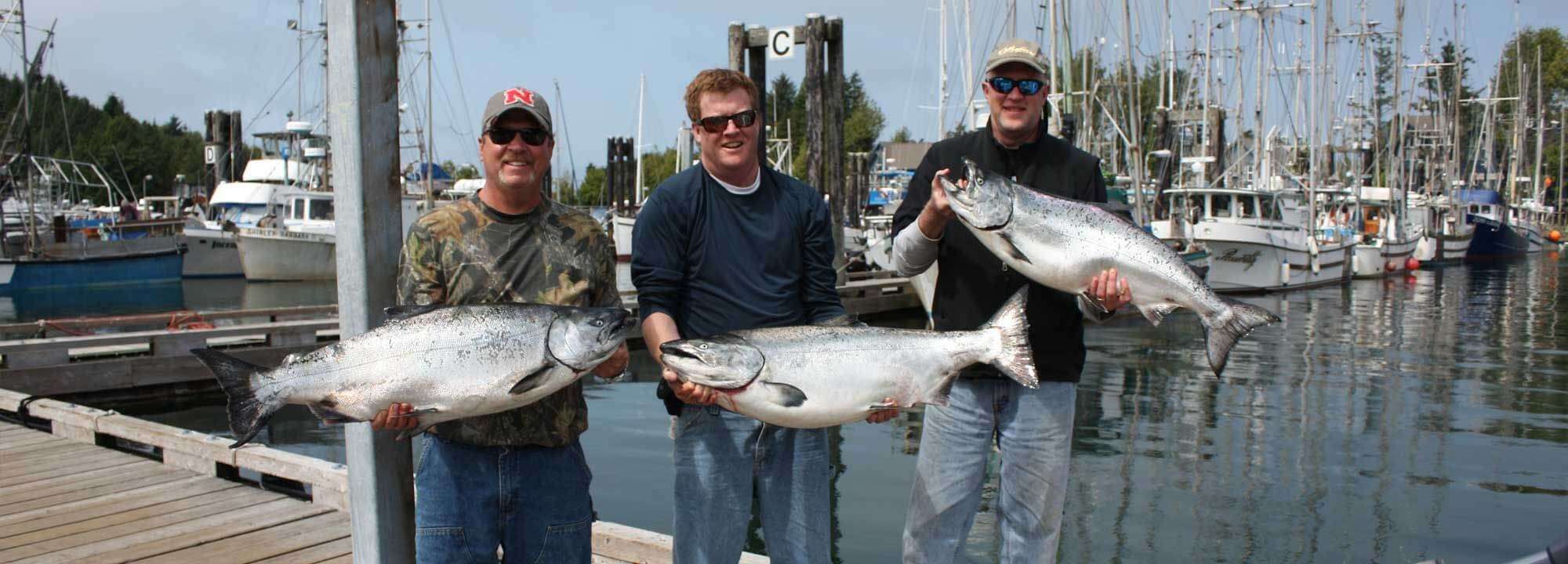
Gallery
Recent Posts
Online Games with…
Online games with free spins…
MAY 3 FISHING…
The best Chinook fishing has…
FISHING REPORT APRIL…
The best Chinook fishing has…
Latest News
Get your spot reserved as soon as possible!
This is a private mailing list and will never be sold or given away for any reason. You can unsubscribe at any time.
FISHING WITH FLASHER AND HOOTCHIE PART 1
Probably more salmon have been caught by commercial fisherman and sports fishermen alike using this combination than just about any other hook setup ever invented. Not to say that spoons or plugs cannot be just as, or even more deadly, but for ease and effectiveness of salmon fishing…, the flasher and hootchie combo take the cake.
Every once in awhile, I manage to boat a salmon that is swimming exhaustively on the surface, dragging a flasher/hootchie combination. It never ceases to amaze me the different setups a salmon will strike, especially when the bite is on.
Combinations I would never dream of fishing somehow find themselves into the mouths of feeding salmon. Once or twice, I even tried pulling some of this gear for awhile, dubious as it looked before going in the water. I wasn’t surprised when it never got a bite, but then maybe it was because I never really expected one anyway. All this to say that there are few hard and fast rules when it comes to salmon fishing. One sure thing is that all fishing rules are made to be broken. But after thousands of hours guiding clients from all over the world, I have learned some things that have bailed me out when fishing is slow and wet nets are few and far between.
The first and most important thing to remember is: KEEP YOUR HOOKS SHARP. I know you’ve heard it before and are probably already going on to the next thing, but remember, razor sharp. I’m not going to say much about color selection; I’ll touch on that in Part 2. If you are in doubt, it’s hard to go wrong with a glow white with a splash of pink or green. Color can be important, but not nearly as important as other factors. Every fisherman has his favorite. Any one of hundreds of colors can work on any given morning. Flasher selection can also be important. There are dozens to choose from and a dizzying array of new colors and techno splashes out every year. I basically recommend a flasher that has good reflective capabilities when fishing the top 120 feet, and a flasher that has a glow side when fishing deeper. Obviously, these depths can be adjusted depending on light levels, but that is my rule of thumb.
Now for the good stuff. I consider the two most critical factors when fishing a flasher/hootchie combo is leader length and speed. When fishing for Chinook salmon, I generally like a 38” leader. That is measuring from the back of the flasher to the nose of the hootchie. Sometimes I’ll find that lengthening or shortening the leaders by only 2 inches will improve my results. But a 38 inch leader should get you going. Next, fine tune your speed. If you haven’t had a bite for awhile fishin different depths, try speeding up. A lot. When I first started salmon fishing professionally, I rarely fished over 2.5-3.0 knots. Having a good GPS really helps with setting the speed. Of course you won’t be trolling at 4.0 knots into a brisk current—trolling upstream is rarely as effective as trolling cross-current or downstream. I’m quite surprised to find how few sport fishermen actually know the direction of the current, especially when fishing offshore when land is not in sight. But it helps big-time to know the direction of the current and plan your first tack of the day fishing downstream or cross current along your favorite ledge or shoal.
So now that you have a good leader length…Oops I forgot to talk about leader strength. I’ve seen people fishing with 25 pound test leaders. You’re asking for broken line every time you hit a decent fish. The flasher blade turns sideways in the water when the fish makes its first run, and the strain on the leader is incredible. I recommend a minimum of 40 pound test, but my favorite is 50 or 60 pounds. I haven’t found that increasing test strength decreases the number of strikes, but don’t go less than 40. Also, the stiffer the leader, the better the action on the hootchie. A stiff leader causes the hootchie to dart through the water more like a real squid, thereby increasing the number of strikes.
Watch your sounder for feed or other marking fish, and if you aren’t getting bites, speed up! Many times, I have hooked 30 pound plus fish trolling in excess of 4.0 knots. There’s something about all the excitement of a wildly rotating flasher to cause a sleepy spring to wake up and chase it. These fish have less time to decide, especially if all the commotion is attracting other salmon, so often they speed up and STRIKE!!. So remember, better fast than slow.
In Part 2, we’ll cover lure color and depth..plus a few other things.
Tight lines and good luck!


